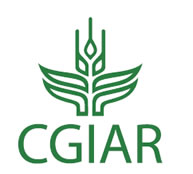
|
The World Agroforestry
Centre and the new CGIAR
In December 2009, the CGIAR opened a new chapter
in its 39-year history by adopting a new business model
based on two years of consultations. The new model for
the CGIAR emphasizes clear lines of accountability and
balances responsibilities between those who conduct
research and those who fund it. It opens the system
to stronger collaboration and partnership with other
research and development actors.
A balanced partnership
The core pillars of the new partnership are the CGIAR
Fund and the Consortium of CGIAR Centers. The
Consortium unites the international agricultural research
centers supported by the CGIAR and provides a single
contact point for donors. Donors will join together in
the CGIAR Fund, with the aim of harmonizing their
contributions to agricultural research for development,
improving the quantity and quality of funding available,
and engendering greater financial stability. Reinforcing
this two-pillar management structure are various
bridging mechanisms, including a Strategy and Results
Framework (SRF), which guides the development of a
results-oriented research agenda.
Results-oriented research
The research agenda set out by the SRF will be
implemented through a portfolio of CGIAR Research
Programmes (CRPs – Table 1), although by mid-2011
not all of them had been approved. In each programme,
there will be a lead Centre based on its mandate and
infrastructure in that area. World Agroforestry's agenda
relates to seven of the 15 CRPs, with a large proportion
of its research and budget in CRP6 Forests, Trees and
Agroforestry. This programme has three objectives:
- Enhanced human security through mitigation of forest
and tree-based sources of emissions and carbon
stock enhancement, and increased local and societal
resilience through forest, agroforestry and tree-based
adaptation measures
- Improved livelihoods from forest, agroforestry and
tree-based sources of income
3. Maintained or enhanced forest and tree-based
sources of environmental services, including
biodiversity.
The Centre leads CRP components 6.1 Smallholder
production systems and markets and 6.3 Landscape
management for environmental services, biodiversity conservation and livelihoods. World Agroforestry
participates in the three other components.
Component 6.1 seeks to enhance productivity and
sustainability of smallholder forestry and agroforestry
practices, including food security and nutritional benefits,
through better management of production systems. It will
also increase income generation and market integration
for smallholders through utilization of forestry and
agroforestry options. In addition, improving policies and
institutions will enhance social assets and secure rights
to forests, trees and land.
Research in Component 6.3 will work to understand the
drivers of forest transition at the landscape scale and
developing options for their mitigation. Further work will
show the consequences of forest transition for sustaining
and provisioning environmental goods and services to
benefit livelihoods of the poor and disadvantaged. Finally,
a network of learning landscapes will be established
in which local monitoring and evaluation, coupled with
adaptive management, link stakeholder interests to actual
performance and opportunities to change incentives at
the landscape scale and, through cross-site comparison,
at the national and regional scales.
Table 1. CRP budgets
| |
CGIAR Research Programmes (CRPs) |
Lead
Centre |
Budget |
(US$ '000)
% of ICRAF
Budget |
| CRP 1.1 |
Integrated agricultural production systems for dry areas |
ICARDA |
22,578 |
3 |
| CRP 1.2 |
Integrated systems for the humid tropics |
IITA |
26,885 |
3 |
| CRP 1.3 |
Harnessing development potential of aquatic systems |
Worldfish |
5,223 |
0 |
| CRP 2 |
Policies, institutions and markets |
IFPRI |
54,273 |
13 |
| CRP 3.1 |
Wheat: food security & livelihoods of the poor |
CIMMYT |
23,130 |
0 |
| CRP 3.2 |
Maize: food security & livelihoods of the poor |
CIMMYT |
39,783 |
0 |
| CRP 3.3 |
GRiSP: a global rice partnership |
IRRI |
68,884 |
0 |
| CRP 3.4 |
Roots, tubers and bananas |
CIP |
31,082 |
0 |
| CRP 3.5 |
Grain legumes |
ICRISAT |
17,743 |
0 |
| CRP 3.6 |
Dryland cereals |
ICRISAT |
14,937 |
0 |
| CRP 3.7 |
Sustainable increase livestock and fish |
ILRI |
14,179 |
0 |
| CRP 4 |
Agriculture for improved nutrition and health |
IFPRI |
25,420 |
2 |
| CRP 5 |
Durable solutions water scarcity and land degradation |
IWMI |
49,077 |
12 |
| CRP 6 |
Forest, trees and agroforestry |
CIFOR |
40,220 |
45 |
| CRP 7 |
Climate change, agriculture and food security |
CIAT |
22,737 |
12 |
| |
Total |
|
456,000 |
|
|

